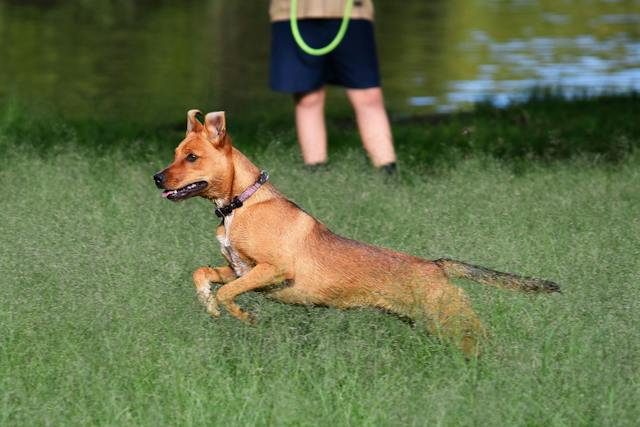How to Check for Ticks on Your Dog
Posted: 06/19/2024 | BY: Jenna Bruce | Categories: Dog , Pet care
Summer is a great time of year to head outdoors with loved knees for some fun and adventures. But it’s also a time of year when ticks lurk in the tall grasses, waiting to clamp on to anything that walks past. Like your dog’s legs and tail. Keep reading to learn how to check for ticks so you can keep your pup safe all summer long.

Why Should I Check My Dog for Ticks?
Ticks are disgusting little parasites that feed by sucking blood from people and animals. They also carry and transmit diseases like Lymes disease, Ehrlichiosis, or Rocky Mountain Spotted Fever, and usually within just hours after attaching to a dog.
It is incredibly important to learn to check your dog for ticks and quickly remove them. The truth is, while dogs should be on flea and tick prevention treatment year-round, they are not always 100% effective. Because not every single tick will die from prevention medications, it’s imperative to routinely check your pup and quickly remove all of these little buggers.
How to Check a Dog for Ticks
During the warmer months, it’s important to check your dog daily for ticks, particularly if you have been camping or hiking in wooded areas where ticks are more common.
Ticks can be found anywhere on your pup’s body but are usually located on the head, ears, feet and neck. Some of these little buggers will even make their way in between the webbing between your pup’s paw pads or, worse, attached to their anus. So when we say you really want to look all over, we mean it!
Here are the steps you should take each day during the warmer months to check your dog for ticks:
Use Your Hands
Begin each tick check by running your hands over your dog’s body to see if you can feel any little bumps that may be a tick. Should you feel something, part your dog’s hair in that area to take a closer look.
Get Up Close
Next, it’s time to inspect those areas ticks tend to gravitate toward. Look in and around your pet’s ears. Look under their collar and in their pits. Check their groin area, and lift their tail gently to inspect the underside. And yes, take a look around your pup’s anus to see if any ticks have attached. Make your way down your dog’s legs to their feet, and don’t forget to inspect in between the toe pads and webbing.

Brush or Comb
If you haven’t found any large, engorged ticks attached to your dog, that’s very good. But you’re not out of the woods yet. There could be tiny little ticks that are crawling through your dog’s fur, making their way to their skin, where they will bite and feast.
Take your dog outdoors in the cool temps of the evening and give them a good brushing or coming. This will remove any small, loose ticks crawling around. Do this in your driveway so those ticks don’t wind up in your backyard, ready to hop back on your dog.
How to Remove a Tick from Your Dog
So what do you do if you’ve taken the steps to check your dog and you actually find a large, engorged tick with its head burrowed into your dog? Well, you remove it.
The following video takes you through the process step-by-step.
https://www.youtube.com/watch?v=BZ6_zWmzeMg
If you’re just not comfortable removing the tick yourself, call your vet or groomer to have them do it. A reminder, the tick should not be allowed to east on your dog for days so ask your vet if you can stop by and quickly have a vet tech remove the tick for you. No sense waiting for days for a special appointment.

Final Thoughts
Now that you know how to check for ticks on your dog, you should begin getting into the habit of doing it daily during the summer months. And if you live in a warmer climate, get into the habit of checking throughout the entire year. Doing so will keep your fur baby free from tick-borne diseases.
References:
Disclaimer
The information contained on this blog is intended for informational and educational purposes only and should not be construed as medical advice. It is not a substitute for professional veterinary care. Always consult with your veterinarian before making any changes to your pet's health care or treatment plan.
The authors of this blog are not veterinarians and do not claim to be experts in pet health. The information provided here is based on our own experiences and research, as well as information from reputable sources. However, we cannot guarantee the accuracy or completeness of this information.
We encourage you to do your own research and consult with your veterinarian before making any decisions about your pet's health.
Previous post
Camping with a Dog 101Next post
What is a Cavapoo Dog?Compare top pet insurance providers & plans.
Enter your dog’s age in years and months to calculate their age equivalent to human years.
Calculate your dog’s ageEnter your cat’s age in years and months to calculate their age equivalent to human years.
Calculate your cat’s age